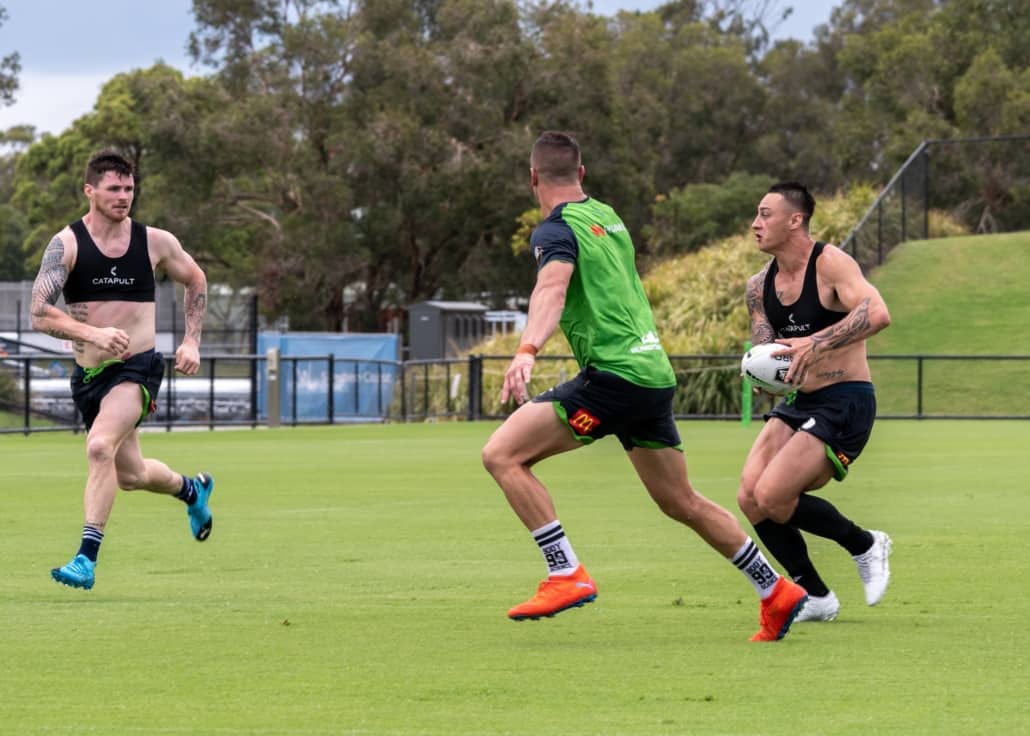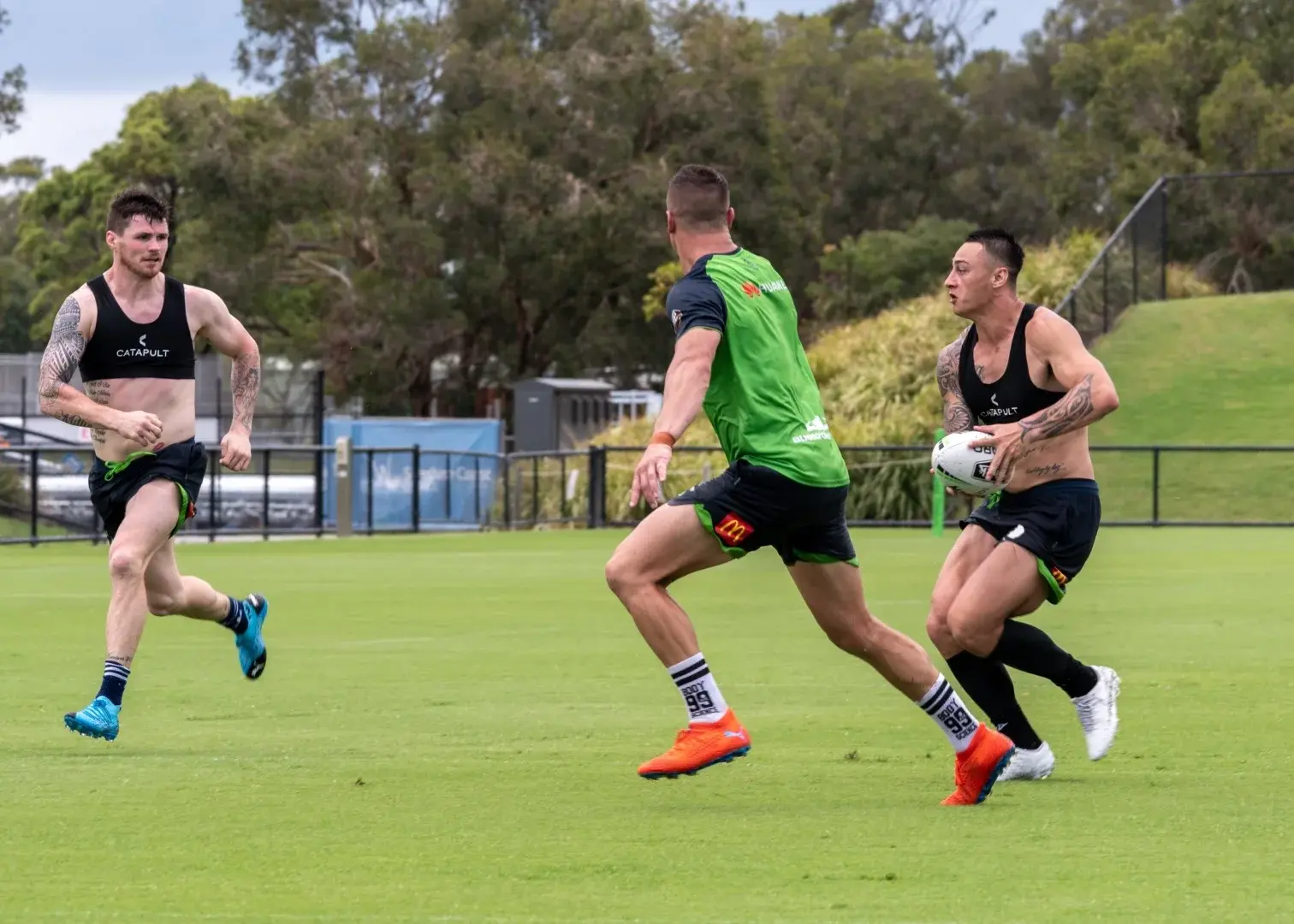Is it time to re-think the 7-day microcycle?
When teams and athletes endure long seasons or twice-weekly matches, the ability to plan microcycles from match to match is more important than ever. As always, there is more than one way to skin a cat…
- Objective
- What They Did
- What They Found
- Practical Takeaways
- Reviewer’s Comments
- About the Reviewer
- Comments

Original study
Eggers, T., Cross, R., Norris, D., Wilmot, L., & Lovell, R. (2022). Impact of Microcycle Structures on Physical and Technical Outcomes During Professional Rugby League Training and Matches. International Journal of Sports Physiology and Performance, 1(aop), 1-6.
Objective
With professional sporting competitions looking to eke out as much value from sporting teams as possible by having them play long seasons or twice-weekly matches, the ability to plan microcycles from match to match is more important than ever. One example is the Australian National Rugby League competition (NRL), where 24 regular season matches are played over six months, with 5-10 days between matches.
As always, there is more than one way to skin a cat with some teams preferring to rest matchday (MD) +2 and start training MD +3 while others prefer to start training on MD +2.
Currently, no research has examined the impact of these different microcycle structures on technical match performance and physical load during field sessions. Therefore, this study aimed to identify how different microcycle structures affected on-field physical training load and physical and technical performance during matches.
What They Did
Thirty-four professional rugby league athletes (age = 26 ± 4 yr) from the NRL were followed for the 26 week in-season.
For the first half of the season, the first skills session of the week was performed on MD +2 with the main field session on MD -3. This was labelled the early microcycle (MCearly). For the second half of the season, the first skills session was performed on MD +3, allowing for an extra day of recovery. The main field session was performed on MD -2. This was labelled the delay microcycle (MCdelay).
Physical output was measured using Catapult GPS during training and matches. Playerload per minute (PL.min-1), Playerload below 2 m.s-1 per minute (PLslow.min-1), metres per minute (m.min-1), high speed running >4.0 m.s per minute (HSR.min-1), and high-speed running >5.5 m.s per minute (Sprint.min-1) were the variables assessed.
For technical statistics, metres gained and frequency of runs with the ball, tackles missed, and tackles made were analysed from match footage.
What They Found
- All physical measures during the first skills session increased in MCdelay compared to MCearly. Physical output was maintained during the main field session on MD -2 even with the increased physical output in the previous day’s skills session.
- No difference in technical match performance was seen between microcycle structures.
- Interestingly, HSR.min-1 increased while PLslow.min-1 decreased in matches during MCdelay compared to MCearly.
Practical Takeaways
- The 7-day microcycle is a hotly debated topic with many options. I’ll list them below:
Option 1
MD +2 (Easy skills day)
MD +3 (Volume/contact technical session)
MD -3 (Off)
MD -2 (Fast technical session)
MD -1 (Potentiation session)
Option 2
MD +2 (Easy skills day)
MD +3 (Off)
MD -3 (Hard technical session)
MD -2 (Off)
MD -1 (Potentiation session)
Option 3
MD +2 (Off)
MD +3 (Easy technical session)
MD -3 (Hard technical session)
MD -2 (Off)
MD -1 (Potentiation session)
Option 4
MD +2 (Easy technical session)
MD +3 (Volume/contact technical session)
MD -3 (Fast technical session)
MD -2 (Off)
MD -1 (Potentiation session)
Option 5
MD +2 (Off)
MD +3 (Technical Skills)
MD -3 (Off)
MD -2 (Main Fast Session)
MD -1 (Potentiation session)
- Overall, it seems removing an extra training day during the in-season from typical microcycle structures allows for better recovery, by improving physical outputs during training without impacting competition performance.
- Within collision sports, physical recovery takes much longer than non-contact sports due to the increased muscle damage and therefore, the extra day may be warranted.
- If using MD +2 as a training session, this is best used as an easy gym session (bodybuilding/prehab style) with technical light skills such as individual and team skills based on the previous match. For example, if a team struggled with defending a particular attacking shape, the session can be dedicated to fixing this issue before going full speed or contact the following day.
James de Lacey’s Comments
“Delaying the start of a microcycle raises the question of what you do with the extra day off. It could be a knee-jerk reaction to have to do something such as bringing the players into the facility for ‘recovery’ and wellness. I think complete rest at home is a better option so they can spend time away.
“However, that doesn’t mean it has to be mental rest. An interesting idea would be using virtual reality to go through game scenarios so they can do mental reps without the physical toll. While this technology hasn’t made its way into rugby (mainly within American football), sending players video to analyse at home is another option to keep them sharp and learning.”
Want to learn more?
Then check these out…
Read this article
Read this article
Want more research reviews like this?
Every coach understands the importance of staying up-to-date with the latest sports performance research like this, but none have the time, energy, or even enjoys spending hours upon hours searching through PubMed and other academic journals. Instead, your precious time is better-spent coaching, programming, and managing all the other more important aspects of your job.
The solution…
The Performance Digest
The Performance Digest is a monthly summary of the latest sports performance research reviewed by our team of hand-selected experts. We sift through the 1,000+ studies published in the realms of sports performance every, single month and review only those which are important to you. Each monthly issues contains 15 research reviews in all of the following disciplines:
- Coaching Science
- Strength & Conditioning
- Technology & Monitoring
- Fatigue & Recovery
- Youth Development
- Nutrition
- Injury Prevention & Rehab
This comprehensive topic base ensures you’re constantly expanding your knowledge and accelerating your career as quickly as humanly possible. The reviews are also hyper-focused, 1-page summaries, meaning there’s no jargon or wasted time. We cut right to the chase and tell you what you need to know so you can get back to coaching.
Join the thousands of other coaches who read it every, single month. Click here to get instant access for free…

